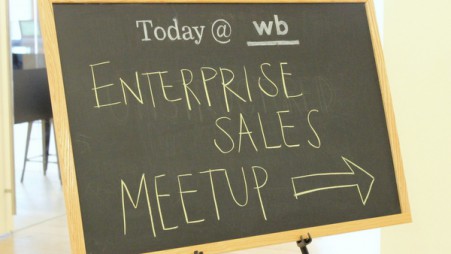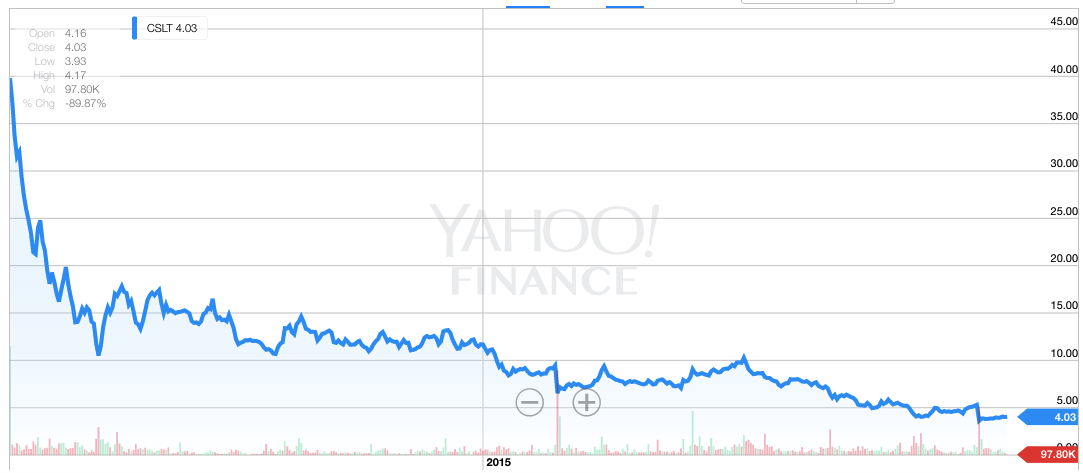 Earlier this year I participated in a panel for the NYC Enterprise Sales Meetup. The topic of the panel was Managing the Enterprise Deal. It was a great discussion and I thank Mike and Mark for inviting me to participate. Prior to the panel, the moderator provided us with a list of questions that we should be prepared for. In preparation for the discussion I wrote down some rough answers to each of the questions and I thought I'd post my notes here. It's great to see that Enterprise Sales Meetup has expanded to other cities over the last few months. I highly recommend attending one if they're in your area.
Earlier this year I participated in a panel for the NYC Enterprise Sales Meetup. The topic of the panel was Managing the Enterprise Deal. It was a great discussion and I thank Mike and Mark for inviting me to participate. Prior to the panel, the moderator provided us with a list of questions that we should be prepared for. In preparation for the discussion I wrote down some rough answers to each of the questions and I thought I'd post my notes here. It's great to see that Enterprise Sales Meetup has expanded to other cities over the last few months. I highly recommend attending one if they're in your area.
Questions:
How many deals do you think a high level business to business professional can manage?
This depends on the salesperson's goal and the average deal size. Generally, salespeople should have a pipeline that is 3x their goal. So if your goal is $1MM and your average deal size is $250k, then you need to be working 12 deals.
What are the best tactics you find to manage a pipeline effectively?
To me it comes down to good stages and good tipping points. I recommend using 4 or 5 stages of a deal, and then for each stage assign actions or things you need to get done before you can move them to the next stage (tipping points). This ensures that there's consistency across deals and ensures the salesperson isn't kidding themselves when they say they have 3 deals 'in contract'. The stages I use are generally something like, Lead, Decision Maker Engaged, Project Design, In Contract, Closed Won. The tipping points for each stage depend on what you're selling, but it could be things like contract sent, legal work completed, technical review completed, etc.
Do you believe in mapping out a process for your company to manage deals?
Absolutely. You need consistency across stages and tipping points. And you need a funnel so you can determine where you're getting stuck.
How do you qualify deals?
Typically I would come up with 3 or 4 elements that I'm looking for from a prospect. Size, revenue, technical setup, management structure, etc. Over time you can iterate on these as you discover what makes a good prospect that leads to good revenue.
How do you find your deal sponsor?
You have to nail down the one or two business metrics that your product impacts and then find the people who are responsible for those metrics. If X metric goes up at the company you're selling to, who is going to get a bonus at that company? That's the person that should drive the deal for you.
Who else do you need besides a sponsor, what other personas do you see?
Project Managers. You want to push for a strong Project Manager that is totally sold on your product and can get it launched and can help you get the deal done. After the executives are sold, so much of enterprise sales is about simple project management and driving the deal through the prospect's buying process. It's really hard for big company's to buy things. You need a partner at the company that can help you get it done.
How do you build a relationship with your sponsor?
One thing is frequency of communication. I always try to set up a weekly check-in. Those consistent check-ins force you to get to know one another. The other thing is I try to make their job really easy. Keep communications really short and simple and show them how to buy your product. Map out their own buying process and track them on it.
How do you determine the buying cycle and process?
You try to identify trends across organizations on how they buy. Who needs to be involved? Who needs to approve? What kinds of meetings need to happen to get to that approval? And then you start to map out the ideal buying process that works for you. If you don't have one, make one up based on what you do know. And map to that.
How do you map out the decision-making team?
Again, another useful way of mapping out a decision-making team is to show one from another client and get them to react to it. Make sure you show legal, technical, compliance, procurement, business people, etc. so nothing gets missed.
How prevalent do you think consensus decision-making is?
It's huge. I've never seen a large company buy without consensus. You have to tell everyone that is involved in the decision-making process your story. Everyone has to support the concept.
How do you use or overcome the startup stigma?
Use it as an advantage. By definition you're disrupting the old way of doing things.. You're doing something much bigger. Inspire them. I find most people want to get better and recognize that the status quo isn't working. Tap into that. Challenge them. The way they are doing things now is not acceptable anymore. Get them to see that and get them on your side. The size and stage of your company is irrelevant compared to the problem you're solving.
How do you establish an ROI, is it even that important?
It's important, but it's often not as important as you think. I think most businesses buy primarily for emotional reasons, rather than rational reasons (prospects buy with their heart and justify it with their mind). So when you come up with your story, it's important that you focus on how your story makes people feel. Most buyers aren't going to believe your ROI anyway. It's about emotion. And most big companies aren't as metrics driven as salespeople would like them to be. Your focus should be on getting the team you're selling to a bonus at the end of the year. And you need to understand what are the levers that will drive that bonus.
If you have a brand new offering how do you overcome the need for an ROI?
The easy answer is a pilot. But the bigger answer is that you have to sell them on your vision and the thing you're trying to disrupt. They have to believe in you, in your company, in your priorities and in your team. That's the hard part. Then you can provide them with a rough ROI that gets them comfortable they're going to make their money back. Use the "what you would have to believe" approach where they only have to believe that you will move the numbers a small amount and they'll still make their money back. Be conservative.
How do you add value in your interactions dealing with other executives?
I like to use what I refer to as "insight selling". Be interesting. Your pitch should be exciting and provocative and short. Like Peter Thiel says, "say things that others aren't". Be exciting. But also use the approach of not "always be closing" but "always be leaving". Have one foot out the door. Look to disqualify opportunities. The prospect is looking to disqualify you and you should do the same thing. You're both trying to figure out if there's an opportunity to help one another. You're total equals in that sense. Act like it. Also, I try to drip prospects quarterly with tidbits of information that might be interesting to them with absolutely no ask. You're not allowed to ask for something in these drips. It could be an article, an insight you picked up from another prospect, etc. Stay on the radar but do not ask for anything. You need to preserve that level of trust and the power dynamic you've built.
 I've added some productivity hacks over the last several months. Here are 5 that have been working well for me lately:
I've added some productivity hacks over the last several months. Here are 5 that have been working well for me lately:
 Because of the emergence of crowdfunding, angel syndicates, private exchanges, and a lower regulatory bar to invest in early-stage startups, it’s likely that we’ll start to see much more consistency between private valuations and subsequent public valuations. Also, don’t underestimate tools like eShares that help founders manage complex cap tables. I can vividly remember being at a startup where we didn’t want to give out stock options to consultants for no other reason than it would’ve added too much complexity to our cap table. It's a lot easier for a private company to manage thousands of investors than it used to be.
Because of the emergence of crowdfunding, angel syndicates, private exchanges, and a lower regulatory bar to invest in early-stage startups, it’s likely that we’ll start to see much more consistency between private valuations and subsequent public valuations. Also, don’t underestimate tools like eShares that help founders manage complex cap tables. I can vividly remember being at a startup where we didn’t want to give out stock options to consultants for no other reason than it would’ve added too much complexity to our cap table. It's a lot easier for a private company to manage thousands of investors than it used to be.









